The 1911 Pistol Refuses To Die
By Charlie Cutshaw
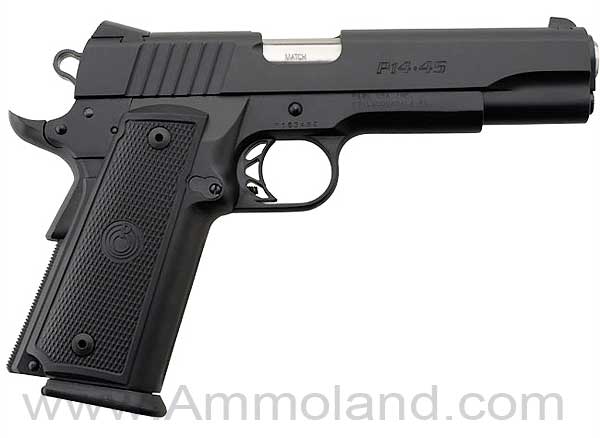

Florence, Alabama – -(Ammoland.com)- After 99 years of service in the world’s darkest places, it is hard to believe that the venerable M1911 pistol has been with us for nearly a century and still remains one of the hottest firearms available.
No other firearm in history has been on the front lines of military and law enforcement for so long. Even more remarkable is the fact that the pistol’s design was finalized in 1910! It took the Army nearly a year to get it through the test process and adopted as the M1911.
The 1911 or its slightly modified version, the M1911A1 have been with us and have served in every military operation since its introduction. Beginning with General “Black Jack” Pershing’s expedition into Mexico in 1916, through World Wars I and II, Korea, Vietnam, Desert Storm and now the War on Terror, the 1911 continues to be the handgun of choice by law enforcement and military professionals when they have the option. Despite having been “officially” replaced by the 9mm M9 over 20 years ago, the 1911 soldiers on in our nation’s military, primarily in special operations units whose members appreciate the 1911’s legendary reliability and “stopping power” of the .45 ACP cartridge.
In law enforcement the 1911 is a “growth industry.” A 1911 type pistol is also the choice of many law enforcement agencies nationwide. The FBI Hostage Rescue Team and regional SWAT Teams all employ 1911s. Local agencies have also made 1911 pistols their choice. Special teams like LAPD SWAT and Special Investigations use 1911s – in this instance, Kimbers. The Tacoma, Washington Police Department and others have authorized 1911 pistols for patrol carry and the list is growing. Many individual officers of my acquaintance carry 1911-type pistols on duty and yes – my duty pistol is a 1911 type with standard five inch barrel, while my off-duty pistol is also a 1911 type, albeit with a four inch barrel. In fact, there are more manufacturers of 1911 type pistols now than ever before and most have trouble keeping up with demand.
Proven Design
Despite its age, the 1911 has many things going for that make many armed professionals prefer it to more recent designs. I have already alluded to the 1911’s well-earned reputation for reliability and lethality. But there are other factors as well. One is the natural pointing ability of the 1911 due to its grip angle that makes the pistol point like an extension of one’s hand – it is almost like pointing with the index finger. Carried as John Browning intended, i.e. Condition One (Cocked and locked), the 1911 is faster into action than any other pistol, especially DA/SA and DAO handguns and as safe as any, so long as one takes the time to learn how to properly use it.
For example, our local police department authorizes individual officer carry of 1911-type pistols on patrol, but only after a familiarization course, because the 1911 manual of arms should be learned prior to its use.
To take advantage of the 1911’s speed into action, simple but discrete actions must be learned. As the pistol is drawn and brought up into firing position, the safety is swept off and the finger placed alongside the trigger guard unless it is necessary to open fire immediately. If the need is to immediately begin shooting, the trigger can be pressed as soon as the pistol comes on target and the trigger’s “feel” is the same every time it is pulled, unlike DA/SA pistols that have a long heavy pull for the first shot and a short pull for the second, requiring a slight change in grip which in a gunfight could be hazardous to one’s health and continued well-being. The 1911’s trigger also enhances accuracy, which lessens the chance of missing or possibly hitting an innocent bystander while increasing the probability of ending the threat. Then for cops, there is the issue of officer safety. There are documented instances of bad guys getting an officer’s 1911 and not being able to figure out how to switch off the safety, giving the officer time to go for his BUG. (Backup Gun.) Nobody ever accused these morons of having an IQ above room temperature! Finally, there is lethality.
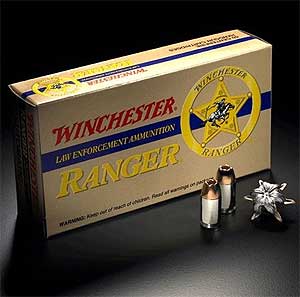
As my friend and colleague Colonel (Ret) Marty Fackler, MD once told me, “You need to make lots of big holes so lots of air gets in and lots of blood gets out.” No military or law enforcement cartridge has terminal ballistics to equal those of the .45 ACP, especially when the rounds are loaded with modern jacketed hollow point (JHP) bullets like 230 grain Winchester Ranger SXT, Black Hills Gold Dot, Hornady TAP or Remington Golden Saber.
The 1911 isn’t for everyone because it requires training to safely use it and a simple manual of arms that must be learned and “hard wired” into one’s brain and muscle memory as opposed to revolvers and pistols like Glock or Springfield XDs that require only that the trigger be pulled for them to fire. In order to safely use the 1911, it must first be understood. For example, a few years ago one of the other officers at the police department where I serve as a reserve officer mentioned to me one day that my cocked and locked (Condition 1) 1911 type pistol made him nervous. I told him that while it may look more apt to accidentally fire, in truth his Glock had fewer safeties than my 1911 type. He was initially incredulous, but I proceeded to point out that first, my pistol’s hammer was physically blocked by the holster’s thumb break retaining strap that must be unsnapped to draw the pistol. Once the thumb break is opened and the pistol drawn, the manual safety must also be switched off, but that’s not all. The grip safety must be properly depressed so the trigger can release the hammer and in many modern 1911s like mine, there is a firing pin safety that physically blocks the firing pin and is deactivated only when the grip safety is properly depressed. Thus, I explained, my 1911 had no less than three inherent safeties, not counting the thumb break, while his Glock had only the trigger safety with the striker always cocked, essentially in Condition Zero.
Although he understood that my 1911 had more built in safeties, he still had some misgivings regarding the visible hammer even though he understood that his Glock was also “cocked.”
Magazine Capacity
Another issue that is sometimes raised is magazine capacity. One can make the argument for pistols with larger magazine capacity, but my response is that I now carry four Cobra Mags of eight rounds capacity each on my duty belt, giving me four rounds more than the three 12 round magazines I carried with my higher capacity pistol with virtually no increase in weight. The mags weigh next to nothing – it is the ammo load that matters. Of course, I have to change magazines more frequently during qualifications, but that is no big deal. I usually do a tactical reload between stages anyhow. For off duty or civilian concealed carry, it’s wise to keep a spare magazine handy. My belt slide holster that I use off-duty accommodates a spare magazine and the chances of my getting in a gunfight so intense that I need more than 16 rounds is slim to none. So magazine capacity really isn’t an issue for me, although for those who desire it, high capacity 1911s like Para Ord’s P14 up the ammo capacity considerably — from eight to 14 rounds of .45 ACP!
Reliability
But there are other reasons for the 1911’s’ unprecedented longevity. One reason is reliability. Given that it has been properly maintained, any well-made 1911 type pistol can be counted upon to go “bang” when the trigger is pulled. The operative word here is “maintained.” No handgun can be expected to function if it isn’t cared for, but the 1911 is more forgiving in this respect than most. In terms of longevity, some manufacturers crow about their pistols going for 300,000 rounds, but this hasn’t been documented to the best of my knowledge. What has been documented is the FBI tests that resulted in adoption of the Springfield FBI Pistol (Professional Model) for the agency’s regional SWAT teams. In these grueling tests, the candidate pistol had to fire 50,000 rounds without parts breakage. Many FBI agents report that their issue Springfields are still going strong after 50,000 rounds. More recently, Nighthawk Custom’s Global Response Pistols are guaranteed to have a 100,000 round service life. The FBI renewed its contract with Springfield, this time for M1911 type pistols with a MIL-STD-1913 rail on the dust cover to accommodate tactical lights. M1911s from Kimber or Springfield ride in the holsters of LAPD SWAT, US Marine Corps MEU-SOC units, the SOCOM USMC Detachment, Drug Enforcement Administration, Tacoma Washington Police Department, and numerous other law enforcement agencies.
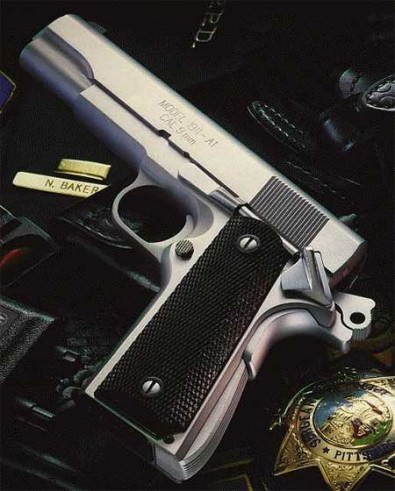
Cocked And Locked
As mentioned, the M1911 is arguably the fastest pistol on the planet to draw and get into action. This is because it is carried cocked and locked. As the pistol comes up, the thumb sweeps the safety off and the pistol is ready to do its self-defense job. The single action M1911 has other advantages, as well. Since it is a single action pistol, the trigger pull is the same every time, unlike DA/SA pistols that have a long initial trigger pull followed by a short single action pull thereafter. Double action only (DAO) pistols are IMHO generally abominations that are adopted by law enforcement agencies whose primary concern is liability, rather than officer safety.
Another previously mentioned ergonomic aspect of the M1911 is its grip angle, which makes the pistol the most natural pointing handgun ever designed. The grip angle is so close to perfection that many handgun designers incorporate it in their pistols to this day. Designs that incorporate the M1911 grip angle include pistols from Beretta, Heckler & Koch and Taurus, among others. Pointing a pistol with the 1911’s grip angle is almost as natural as pointing one’s finger. The 1911’s controls are ideally placed. The safety is in just the right position to be manipulated by the right thumb, as is the slide stop and magazine release. The only “improvements” to the original design since 1911 have been the incorporation of ambidextrous safeties for southpaws. If the shooter is right handed, there is no need for the ambidextrous safety, nor is there any need for full length guide rods that do nothing but make the pistol more difficult to disassemble and reassemble. Before some reader writes in taking me to task about how full length guide rods prevent the recoil spring from “snaking” inside the dust cover, don’t waste your time. The spring doesn’t “snake” because there is no room for it to do so.
I have seen high speed x-ray motion pictures of an M1911A1 cycling and trust me, the spring stays straight with a standard guide rod, just as John Moses Browning intended.
Design Improvements?
With all the changes in firearms technology that have transpired since 1911, none have had a significant impact on the basic M1911 design. About the only meaningful improvements to Browning’s original design have been sights. The original M1911’s sights were about useless and those of the later M1911A1 only slightly better. Most modern M1911 type pistols have much better sights than the originals and that’s about it. Sure, ejection ports have been enlarged and flared and “beavertail” grip safeties have ended hammer bite and enhanced control by slightly lowering the pistol in the shooter’s hand, safety levers have been extended and magazine releases raised for better accessibility, but that’s about it.
In the final analysis, if one is willing to learn how to proficiently use a 1911 type pistol, there is nothing really any better for self defense use. Moreover, the variety of 1911 type pistols and accessories is mind boggling. The variety is so great that Brownell’s, the world’s premier supplier of gun parts and gunsmithing tools, has a separate catalog just for 1911 type pistols. The beauty of many custom parts and components is that they can be installed by any 1911 owner who has the least bit of gunsmithing skills and many are simply “drop in” parts. Would you like a .22 pistol for practice? Brownell’s has the conversion that simply replaces the slide, magazine and barrel. Changing from .45 ACP to .22 LR takes only a few seconds and the process is identical to disassembling and reassembling the pistol for cleaning.
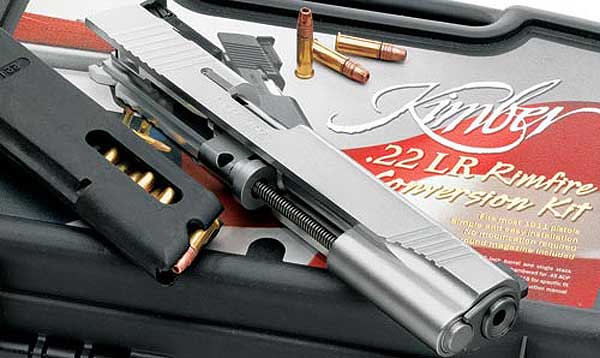
I bought a Colt World War I Commemorative 1911 replica a few months ago as a collectible pistol. Although fully functional, I bought it as an investment and don’t intend to ever shoot it. It is an exact replica of the original 1911 as adopted by the US Army nearly 100 years ago.
The point? Although there have been quite a few changes over the years, the basic 1911 is the “same as it ever was” and if necessary, you could take my replica or an original 1911 and depend on it to get you through a crisis, knowing that the pistol’s basic functioning and its reliability and lethality haven’t changed in nearly a century.
How long will the 1911 be on the front lines of military and law enforcement?
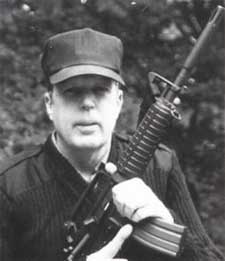
Nobody can say with certainty, but one thing is sure – unless Obama succeeds in banning handguns, the 1911 is going to be with us for a very long time.
About the Author:
Charlie Cutshaw is a well-known U.S. authority on military small arms and has an extensive experience as a former U.S. Army infantry, ordnance ammunition and intelligence officer. He is an editor for Jane’s Infantry Weapons and contributing author for other military and firearms publications. When not writing Charlie is a part time police officer in Alabama. Si vis pacem, para bellum MOLON LABE!

I kept looking for some flaw, some technical glitch in this article, but it's all true and all correct. The M1911A1 is the greatest handgun ever designed. Everything else is just a copy.
Very nice article. I love my newly acquired SA 1911 "loaded" model. I still carry my XD .45 Compact, but will be switching to the 1911 as soon as I find a good IWB holster for it. I've never had a pistol feel as good in my hands as a full size 1911, never shot tighter groups either! So better feel, better shot placement, faster follow ups… what's not to love with a good 1911? Although a bit pricey for most, it was well worth every penny, and probably the single best investment as far as personal/home defense I could… Read more »